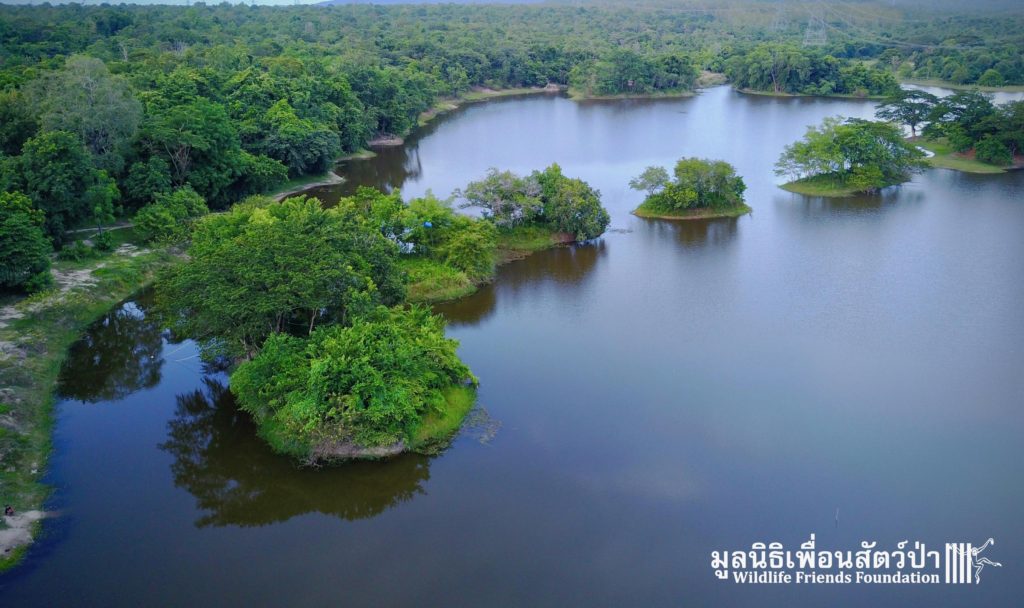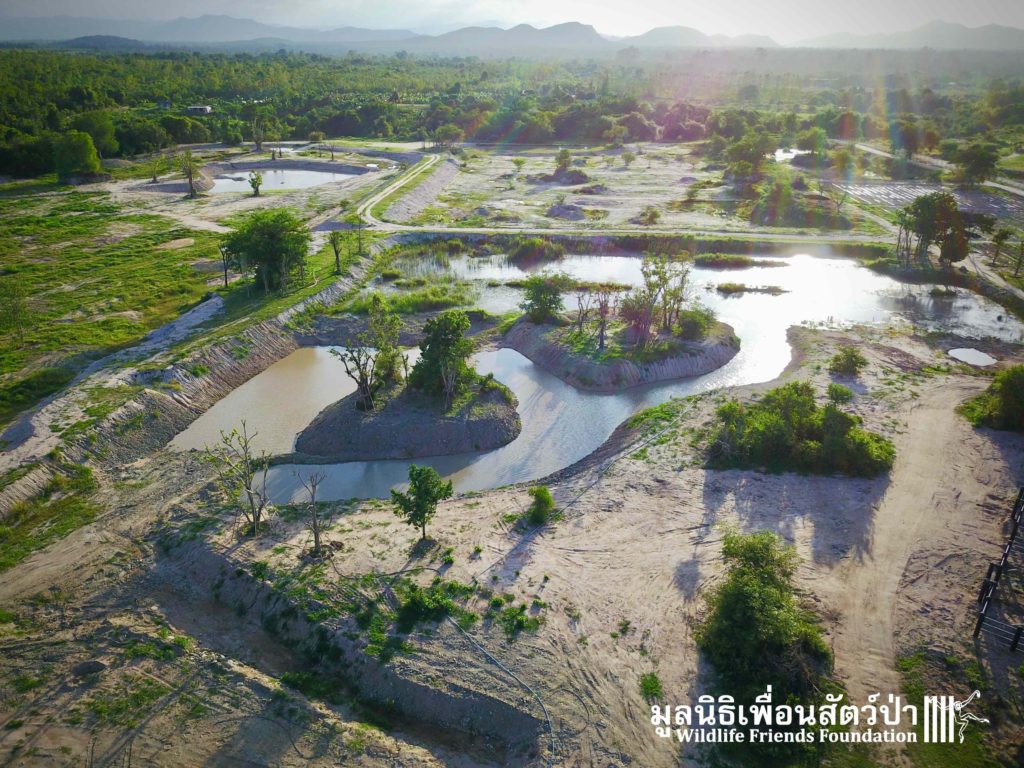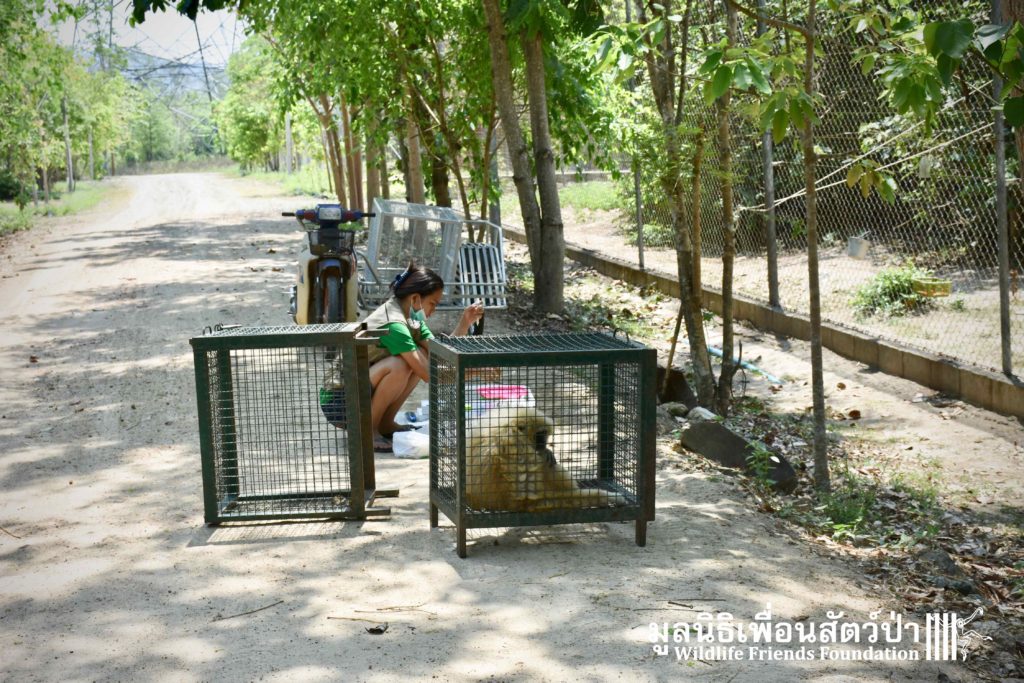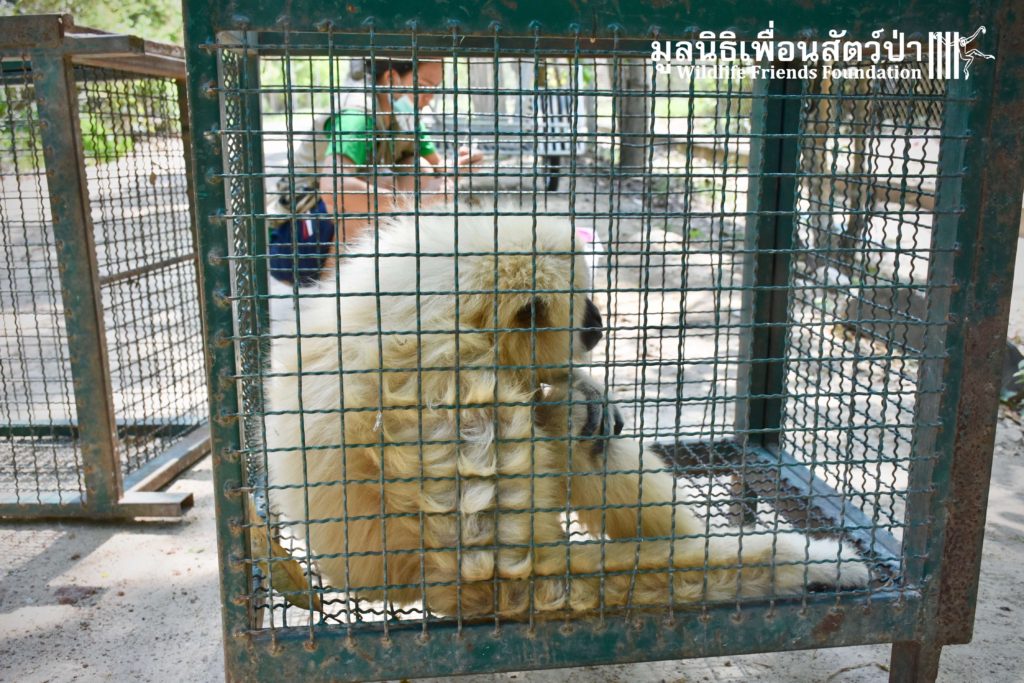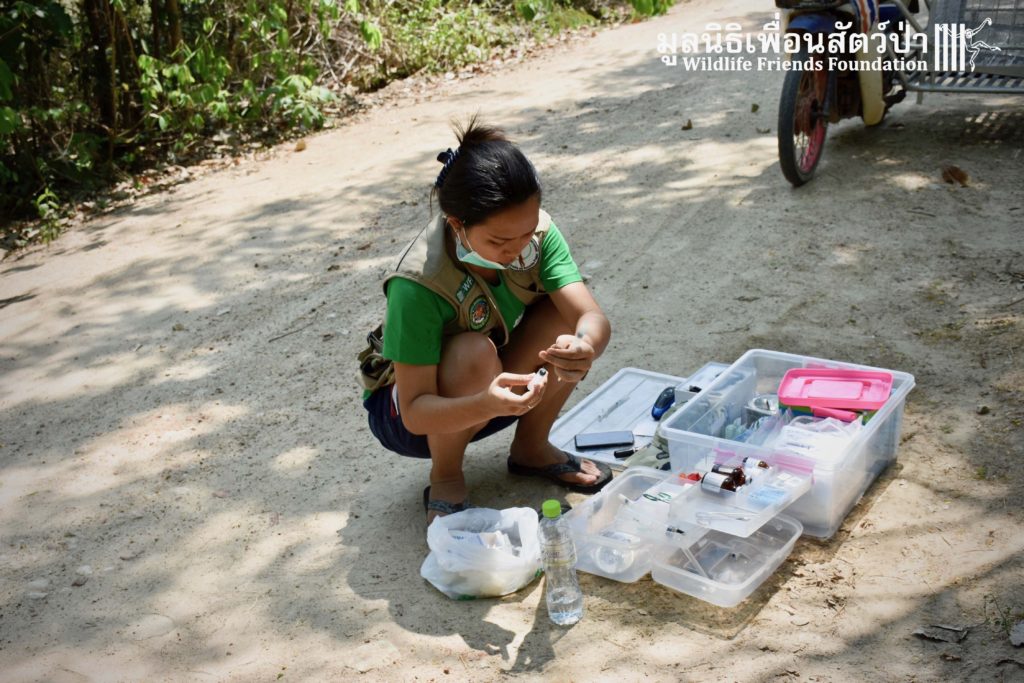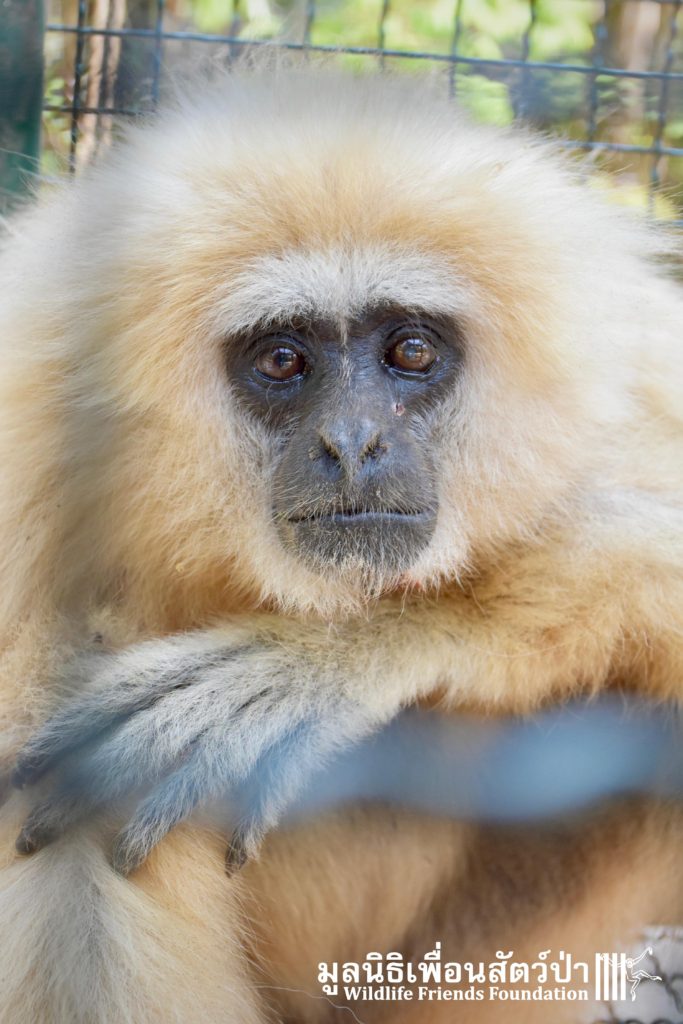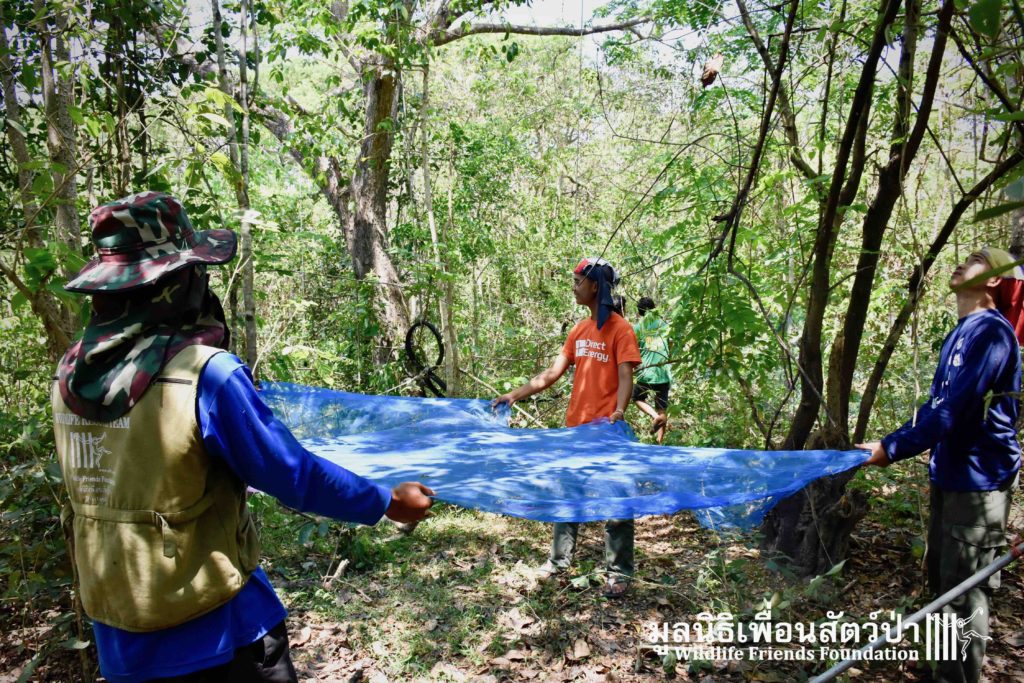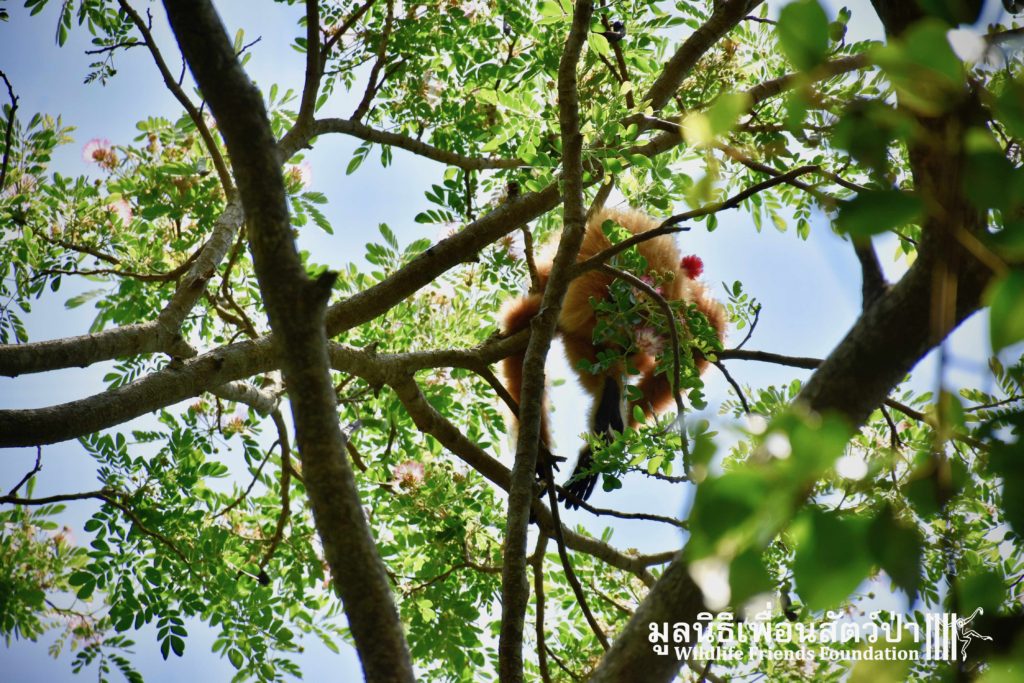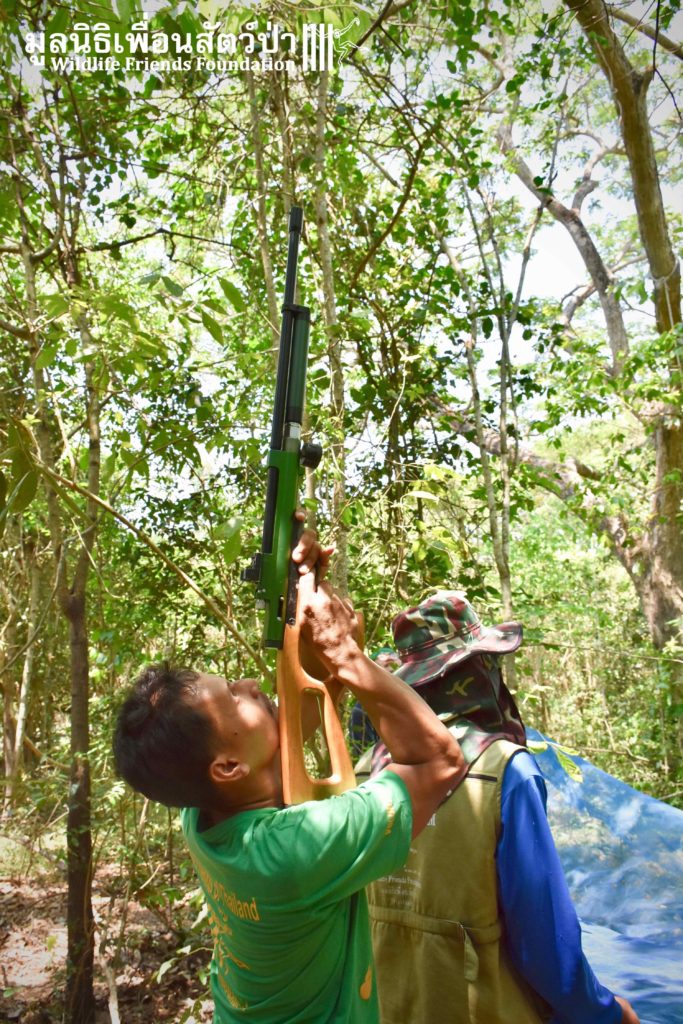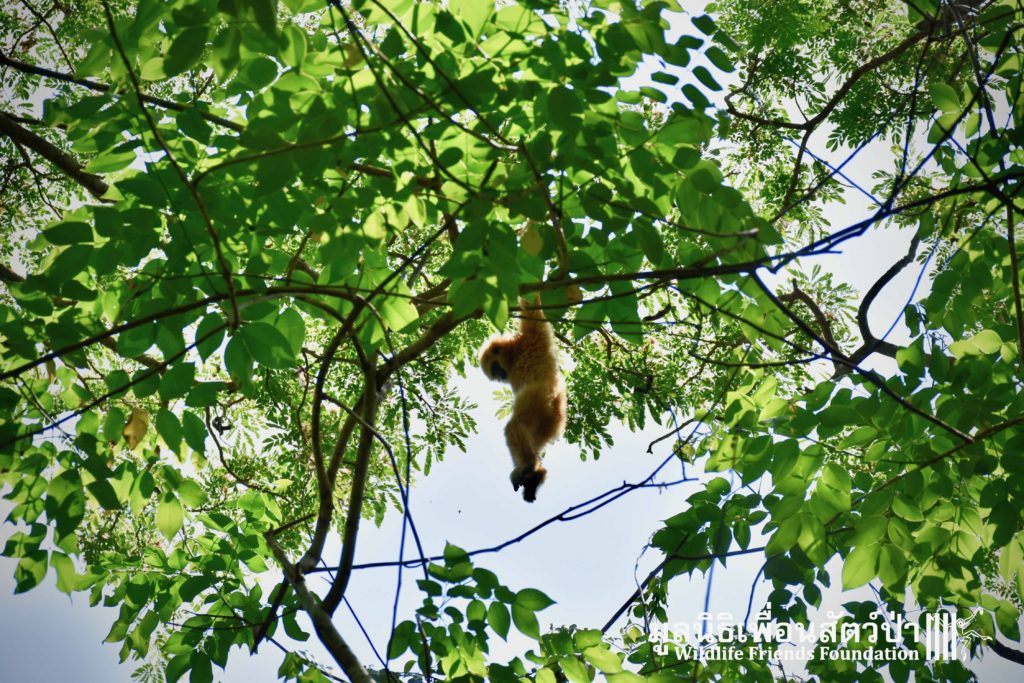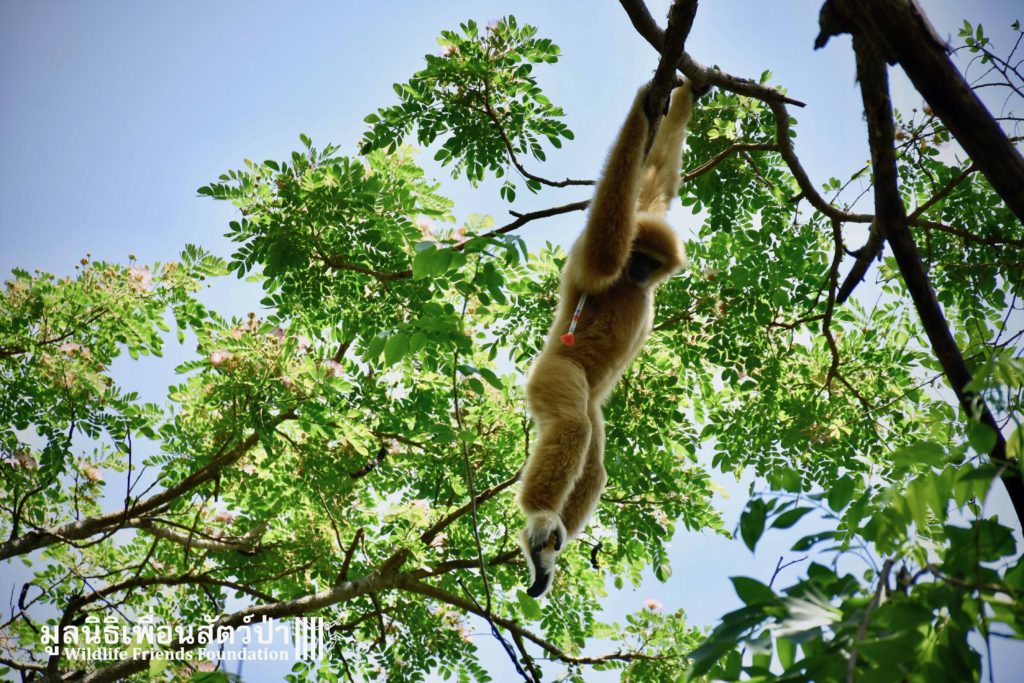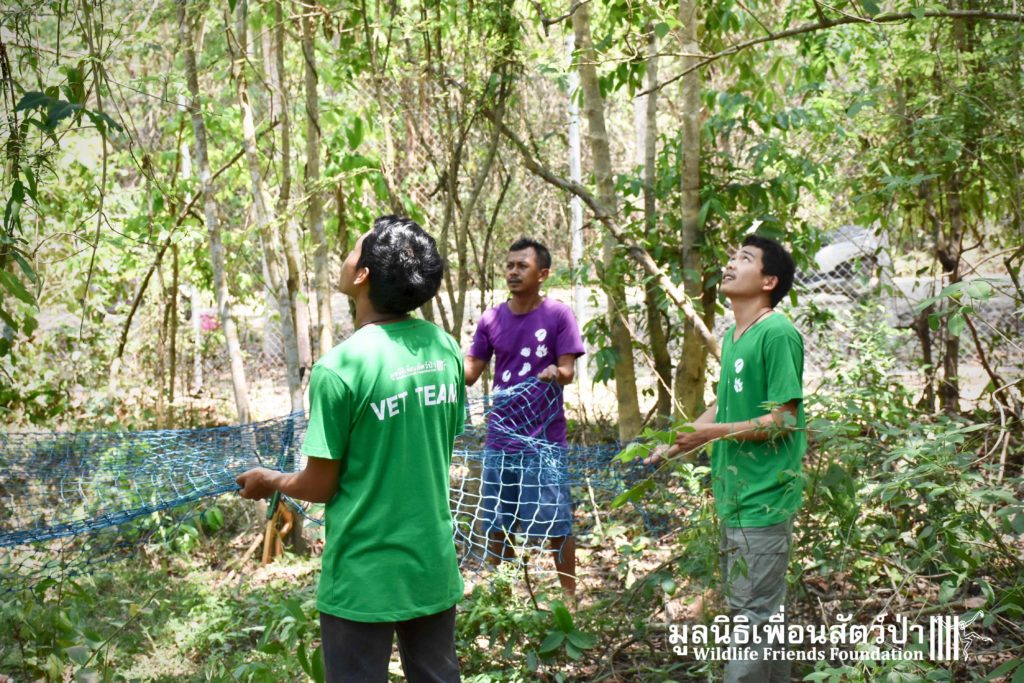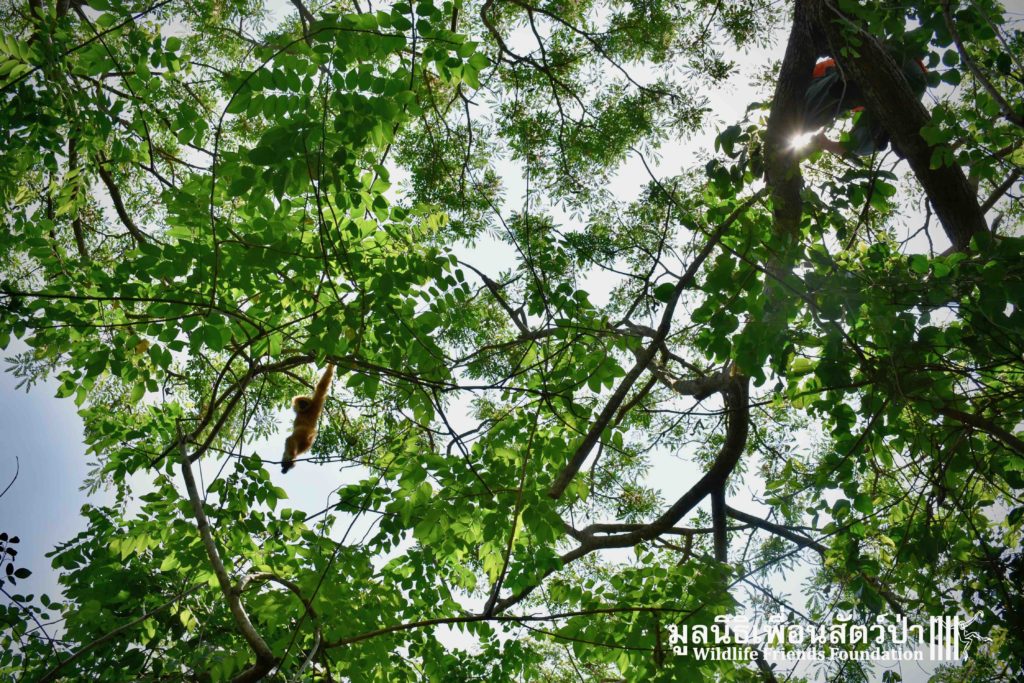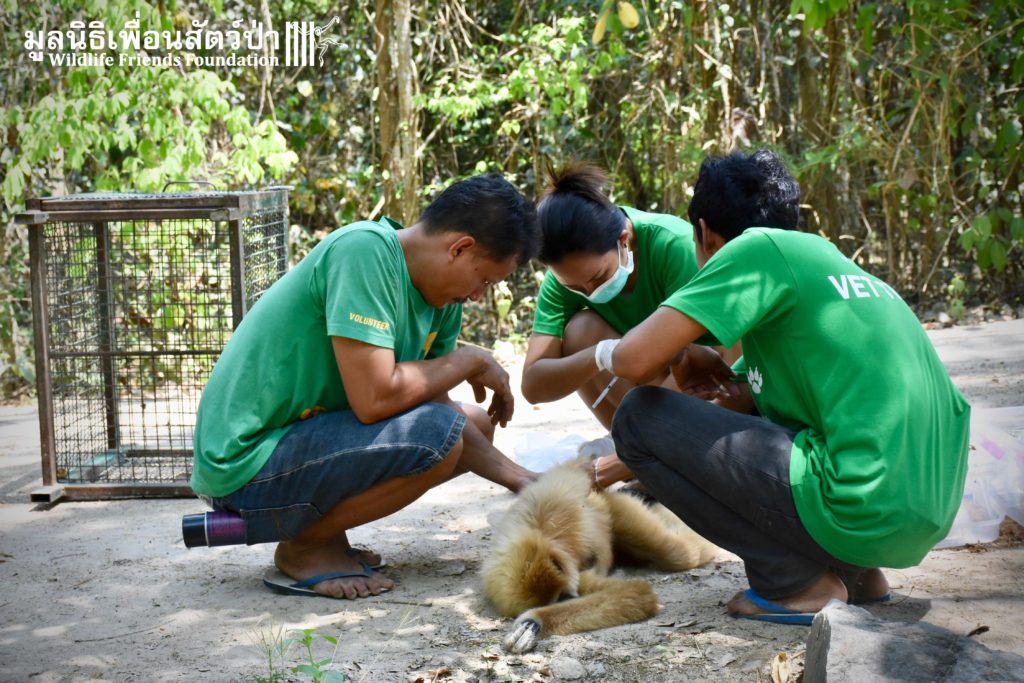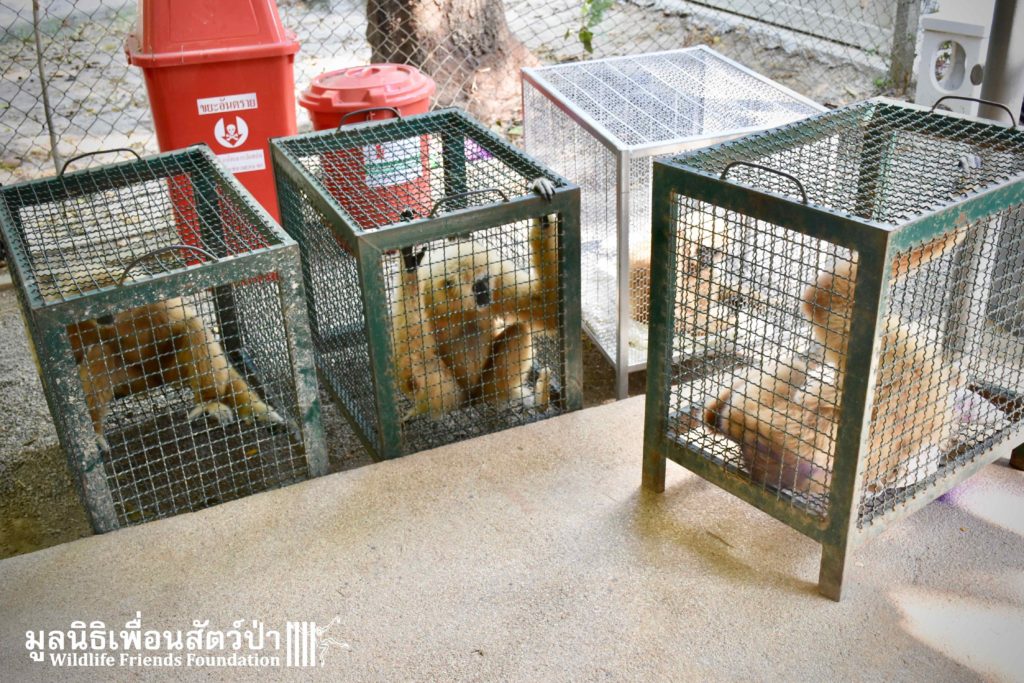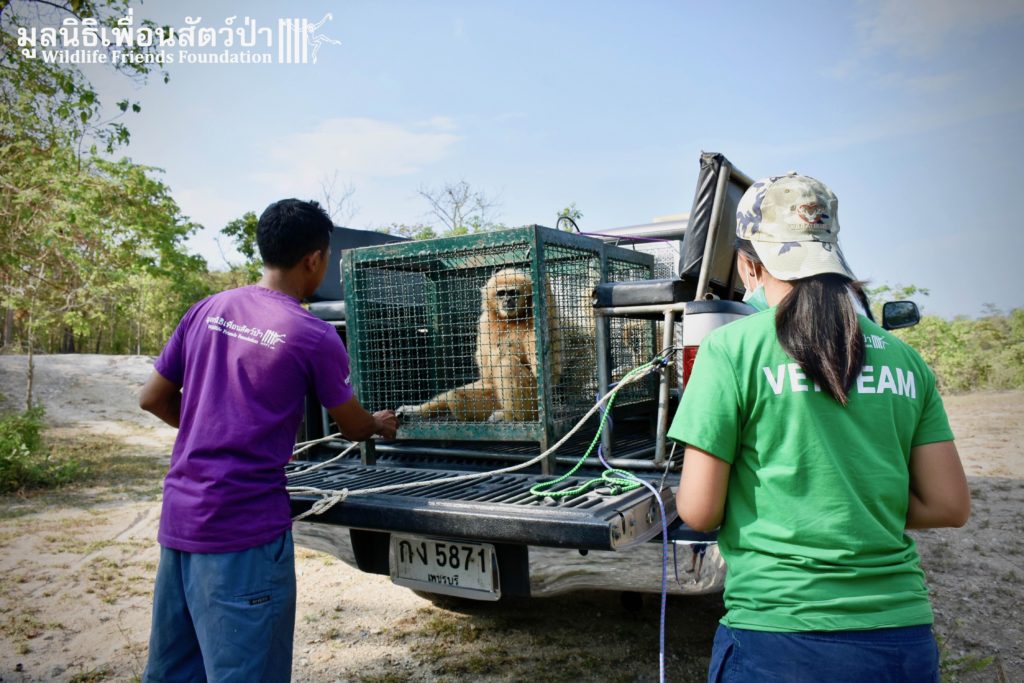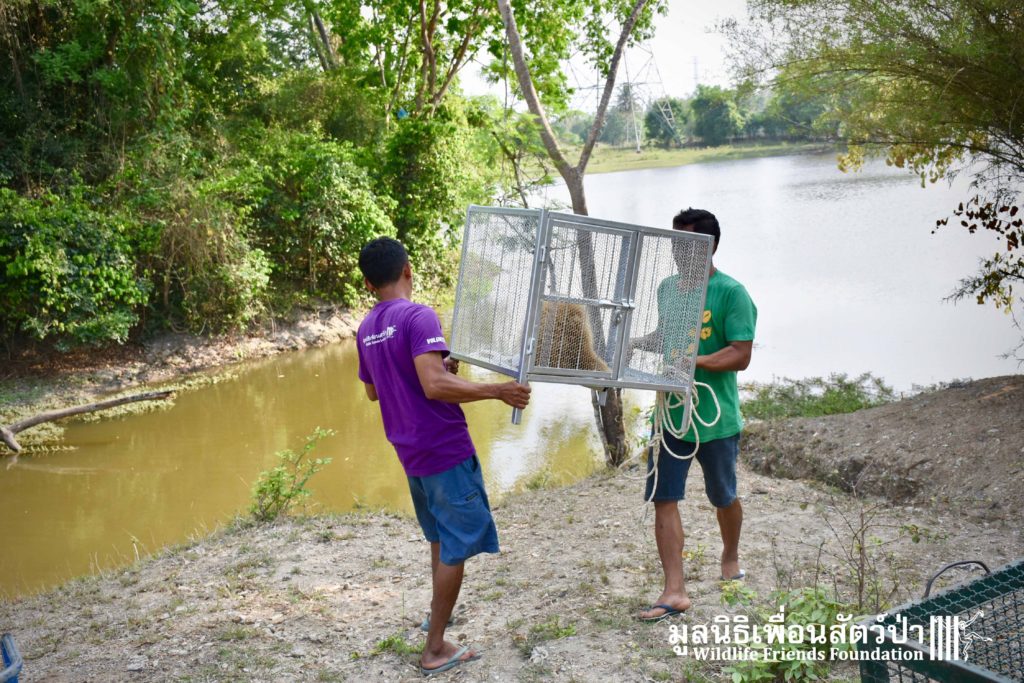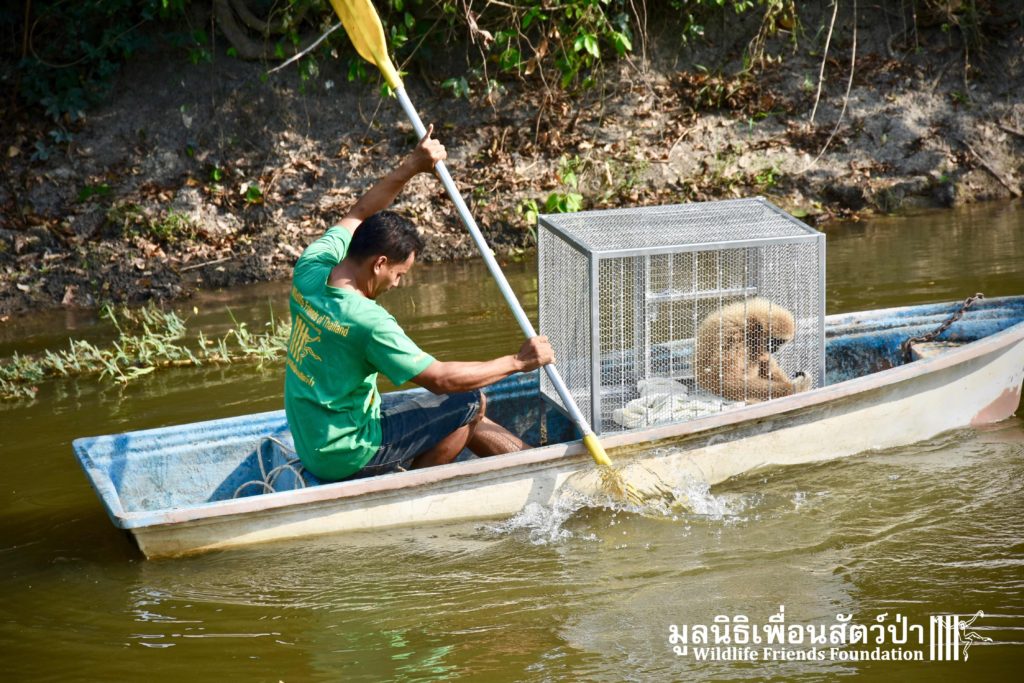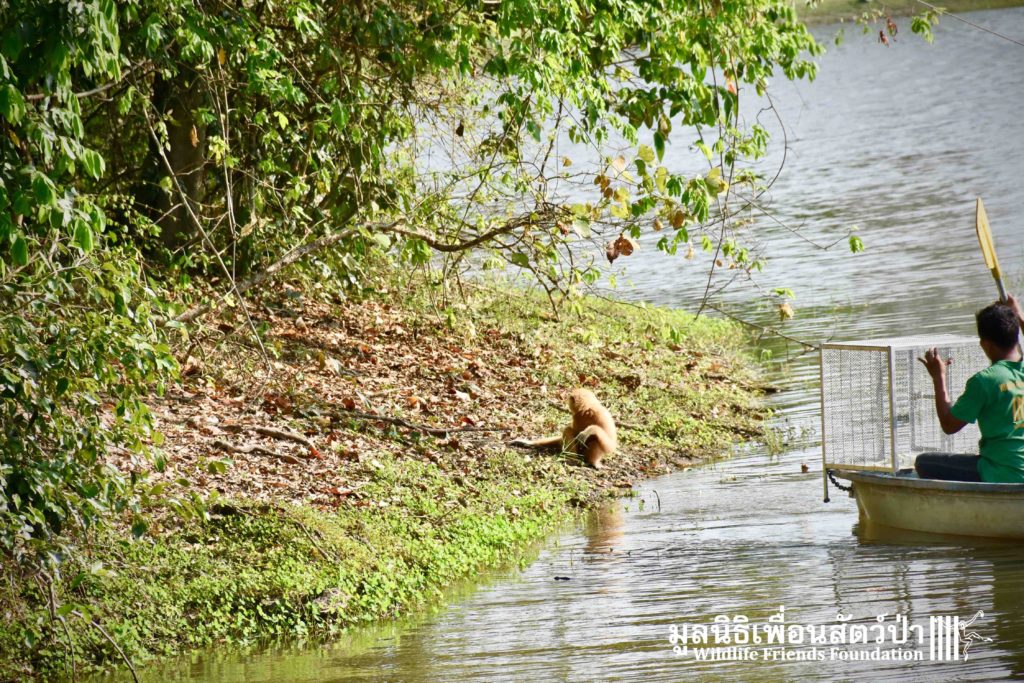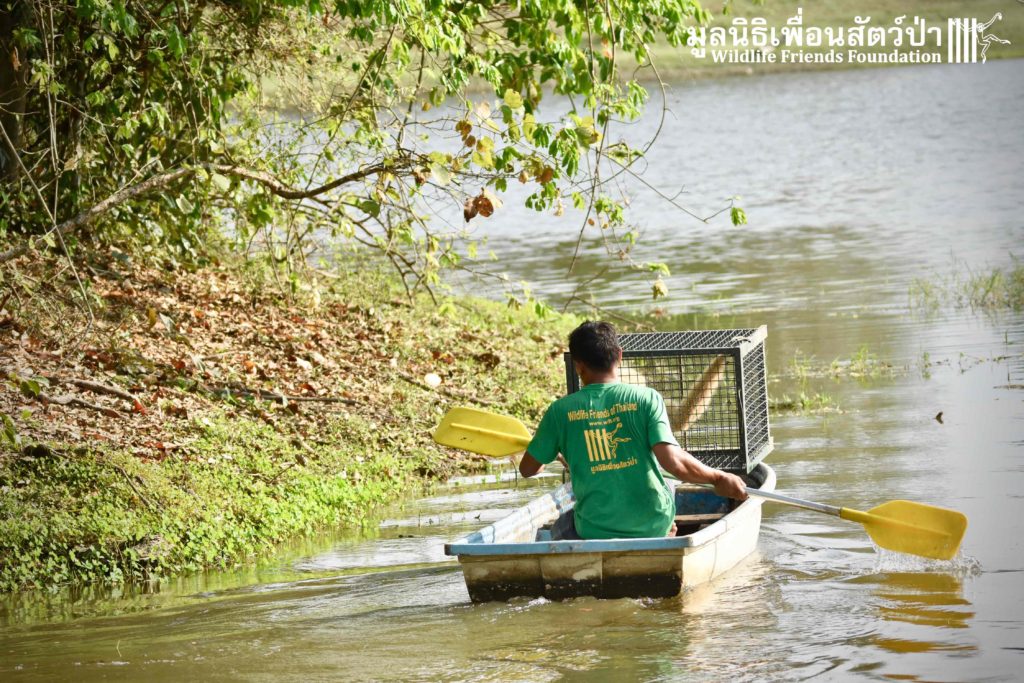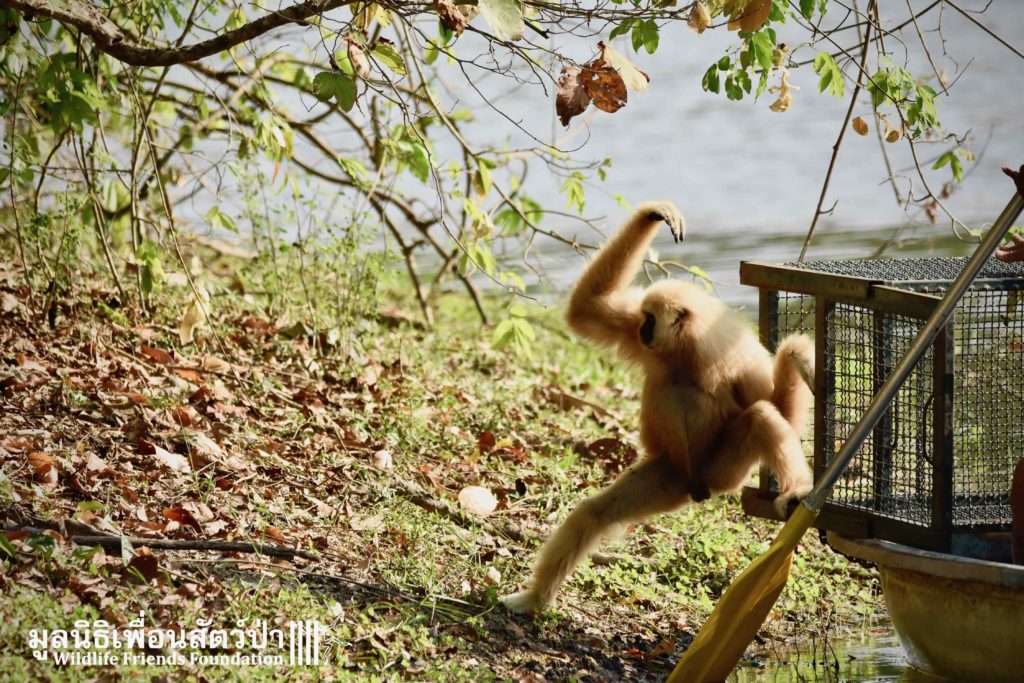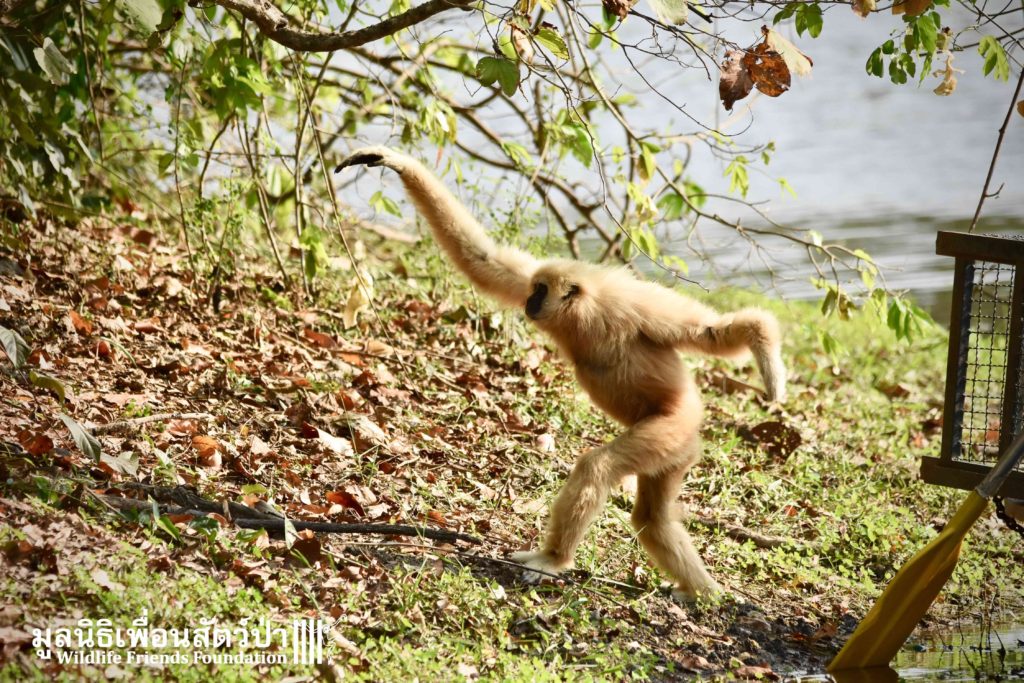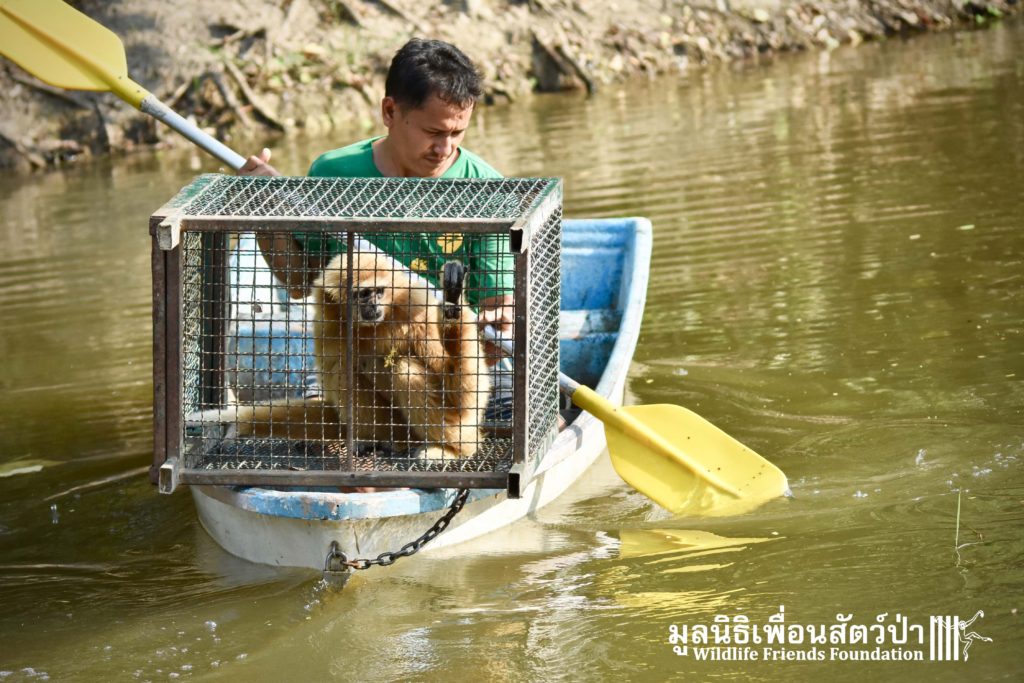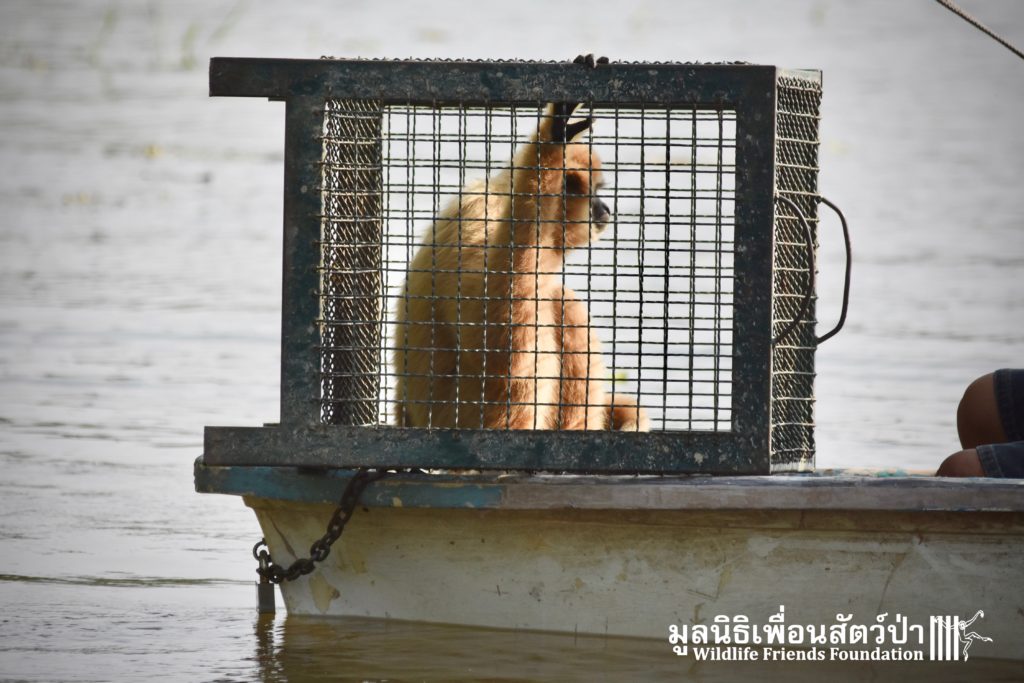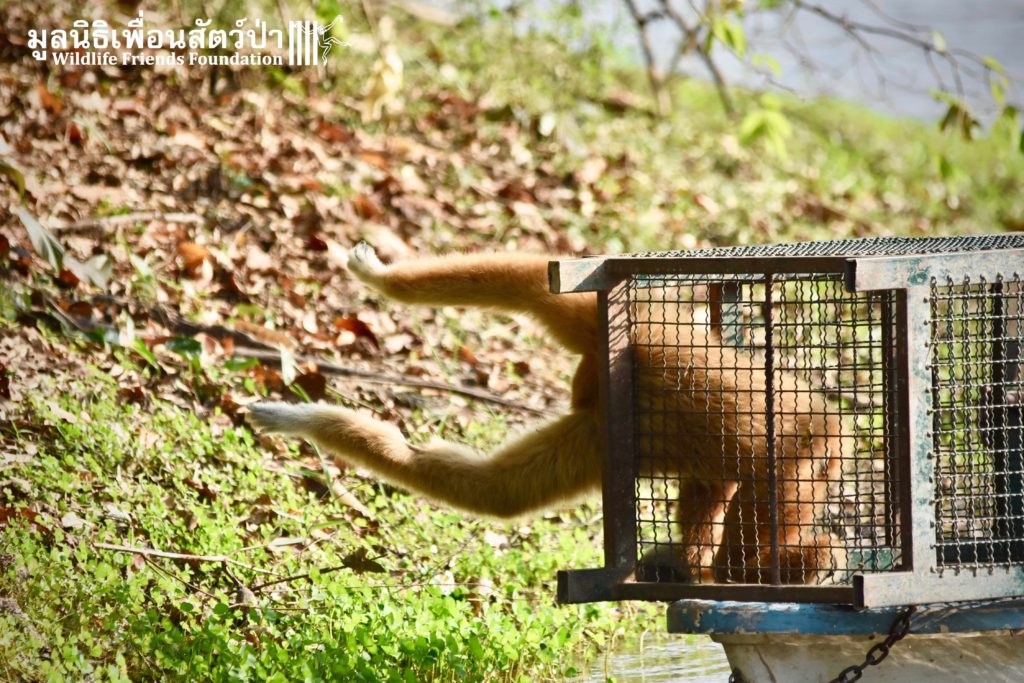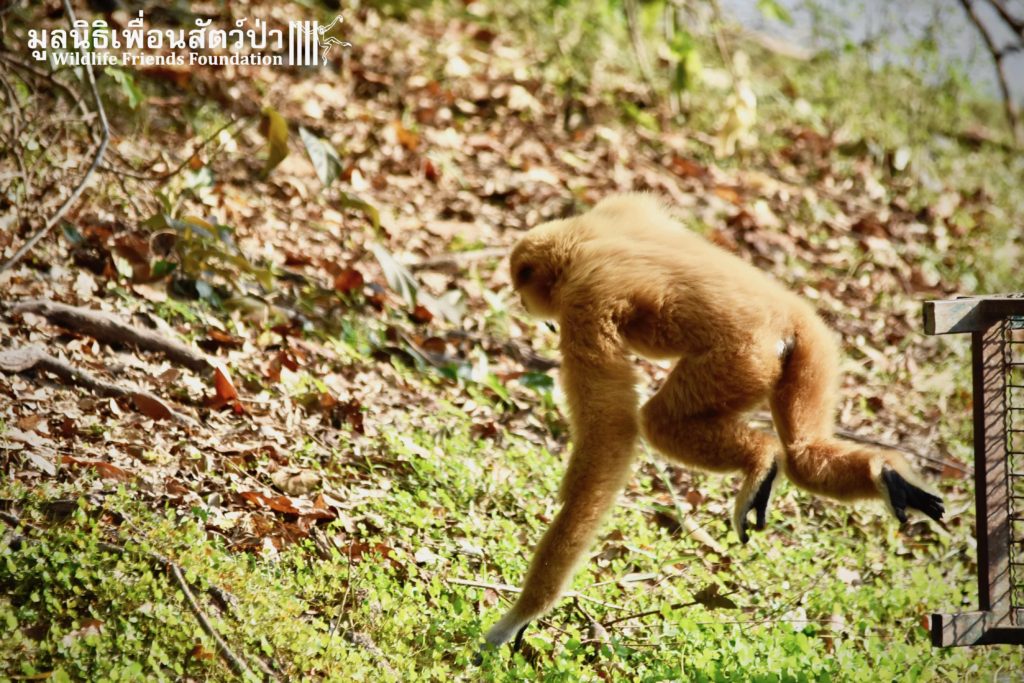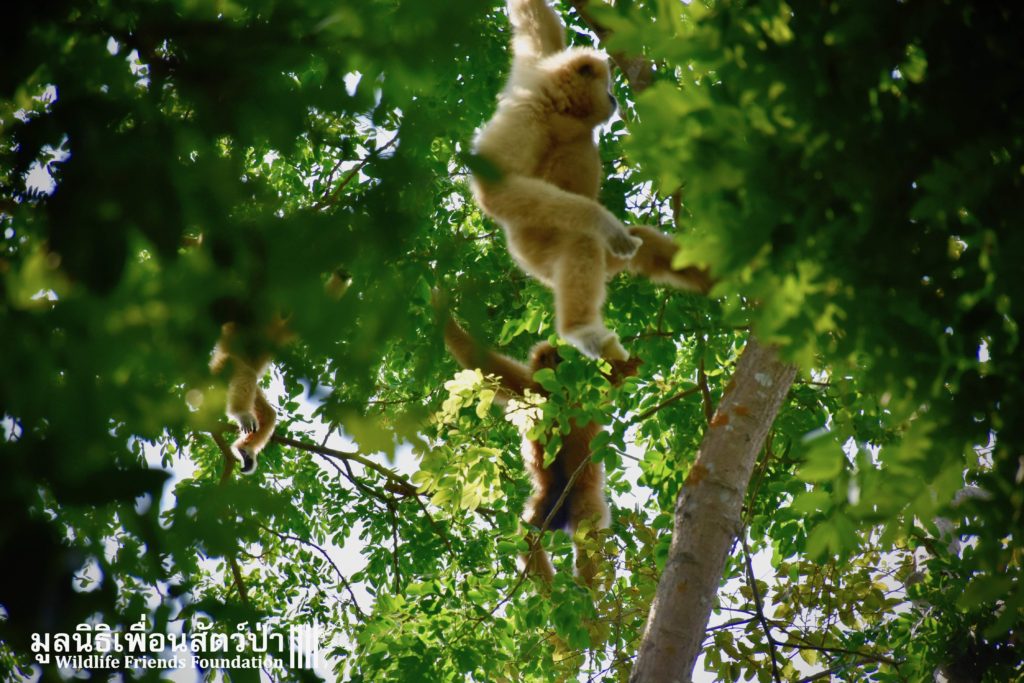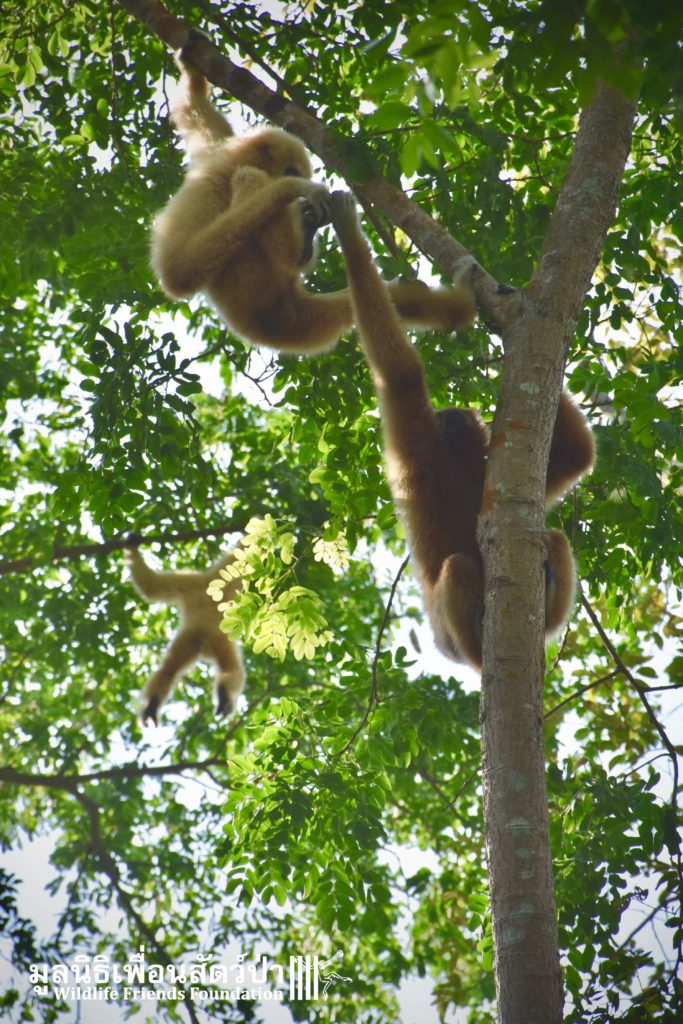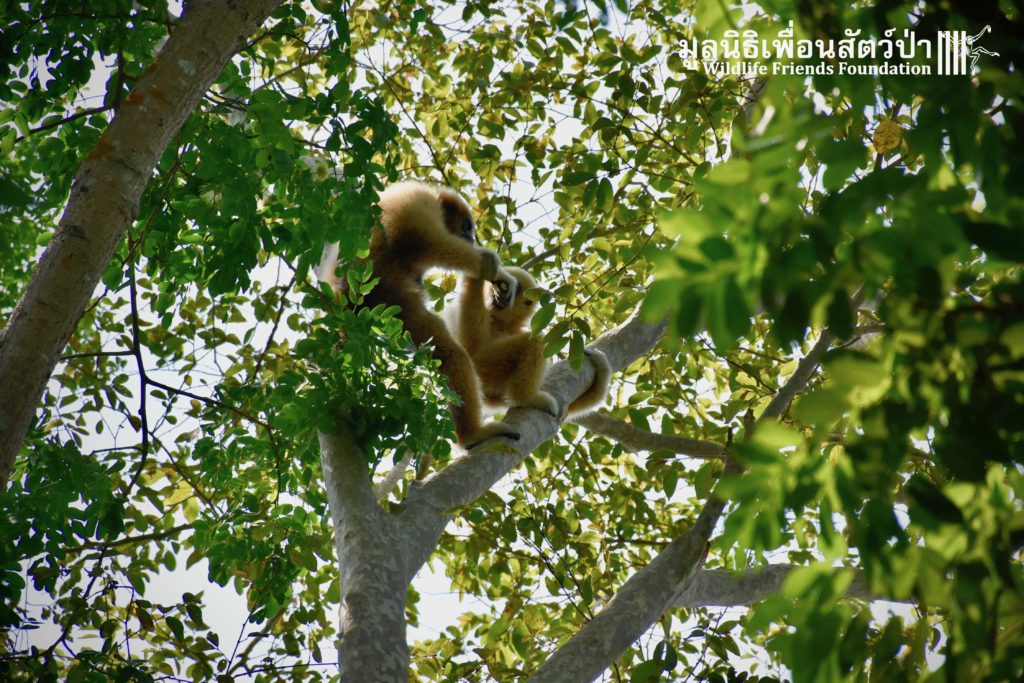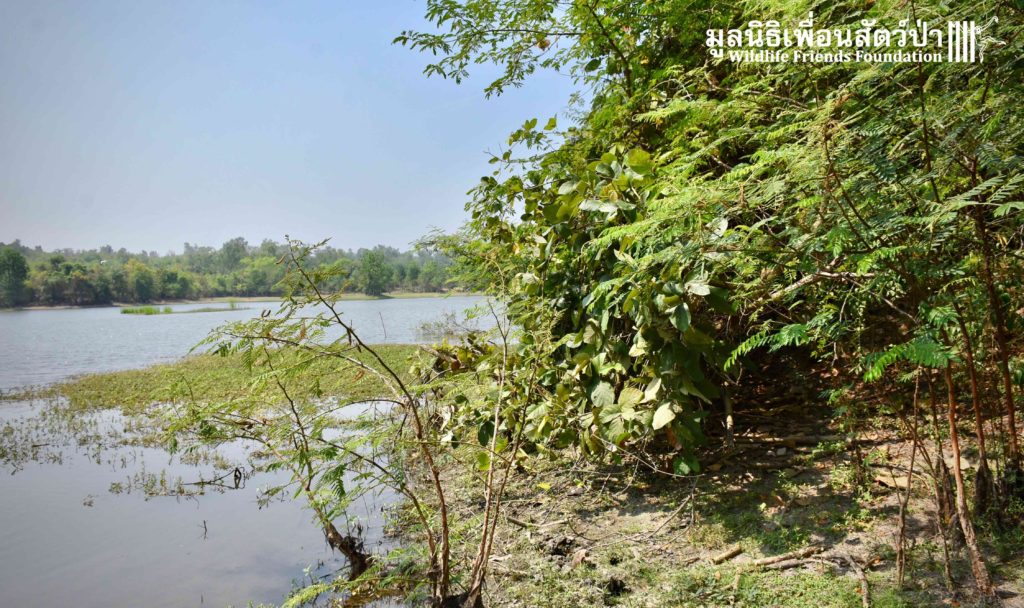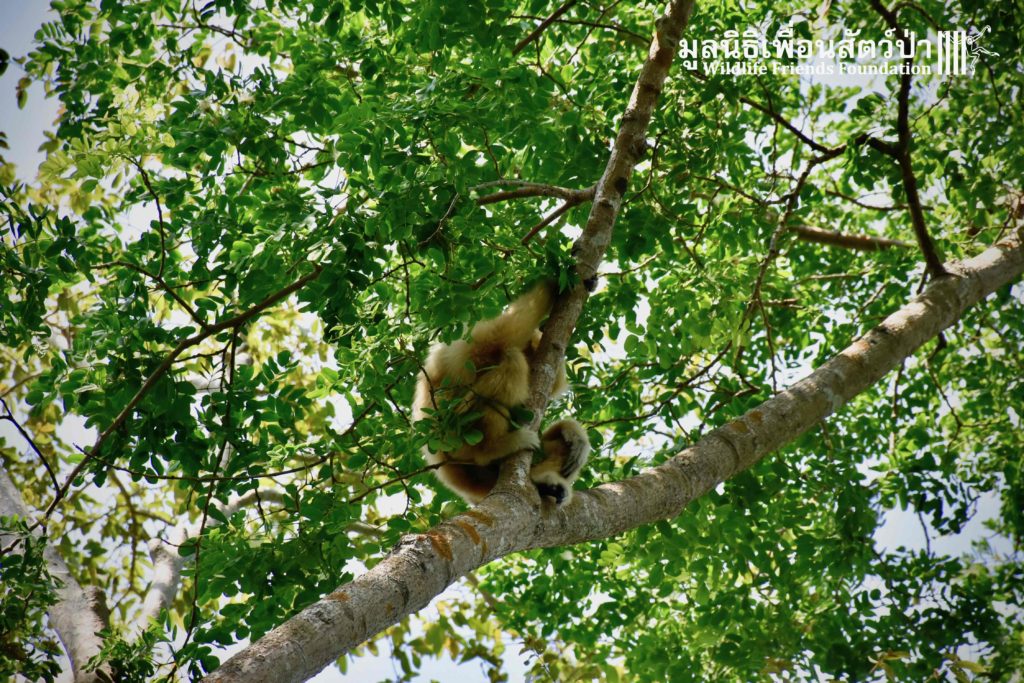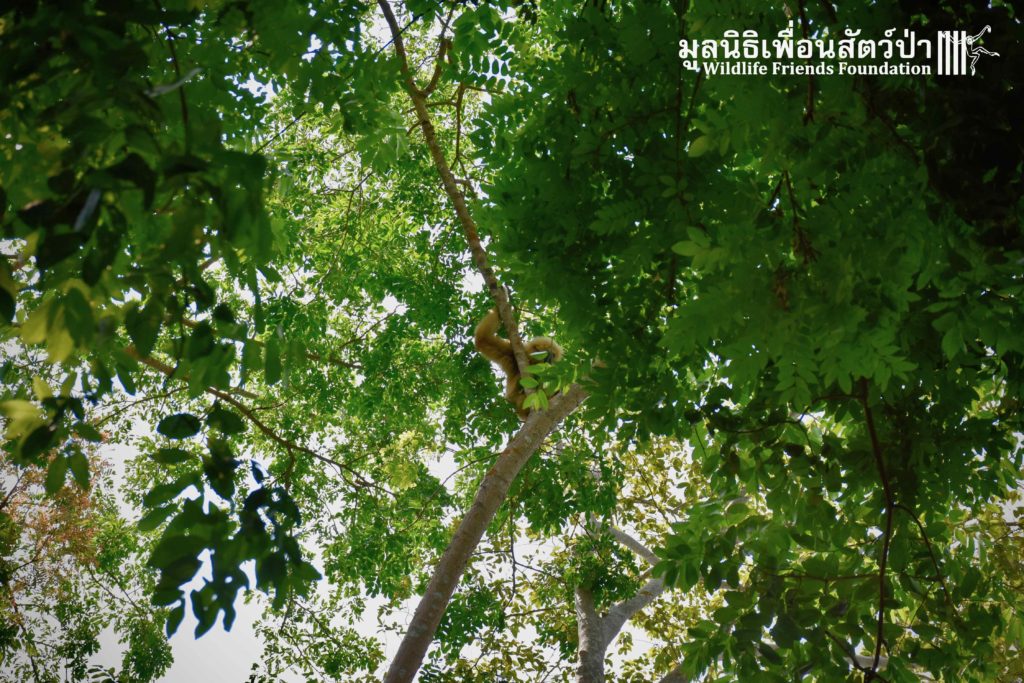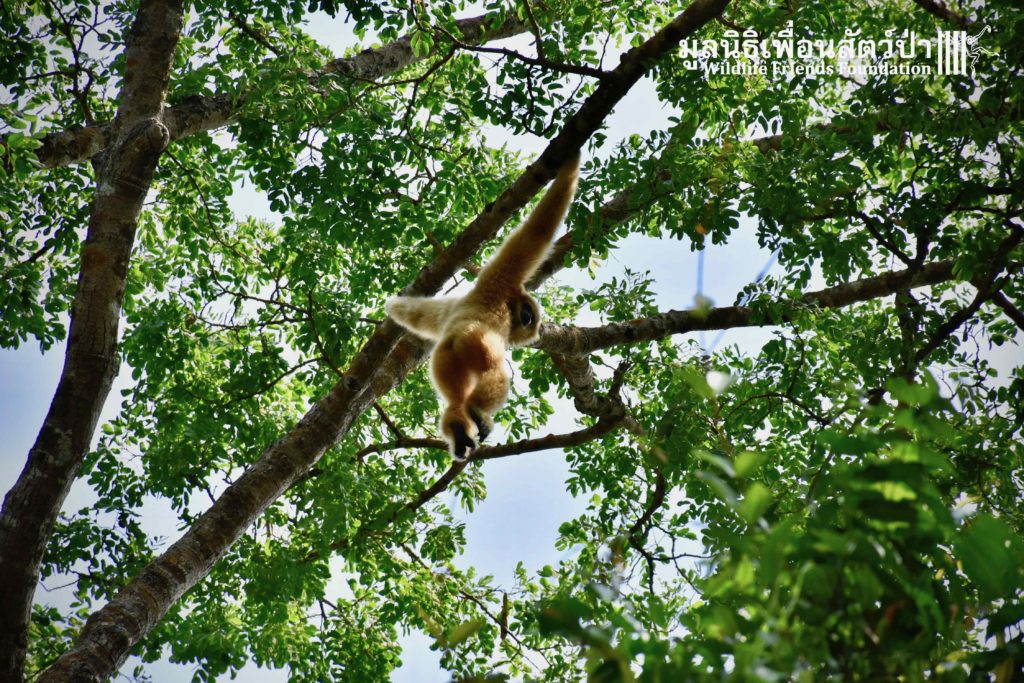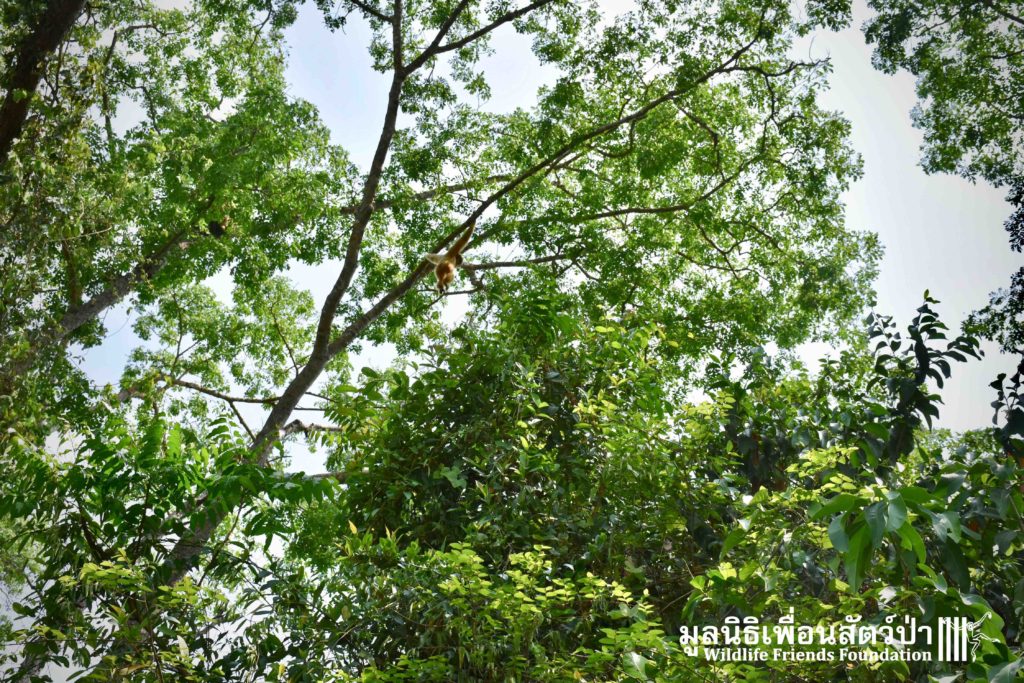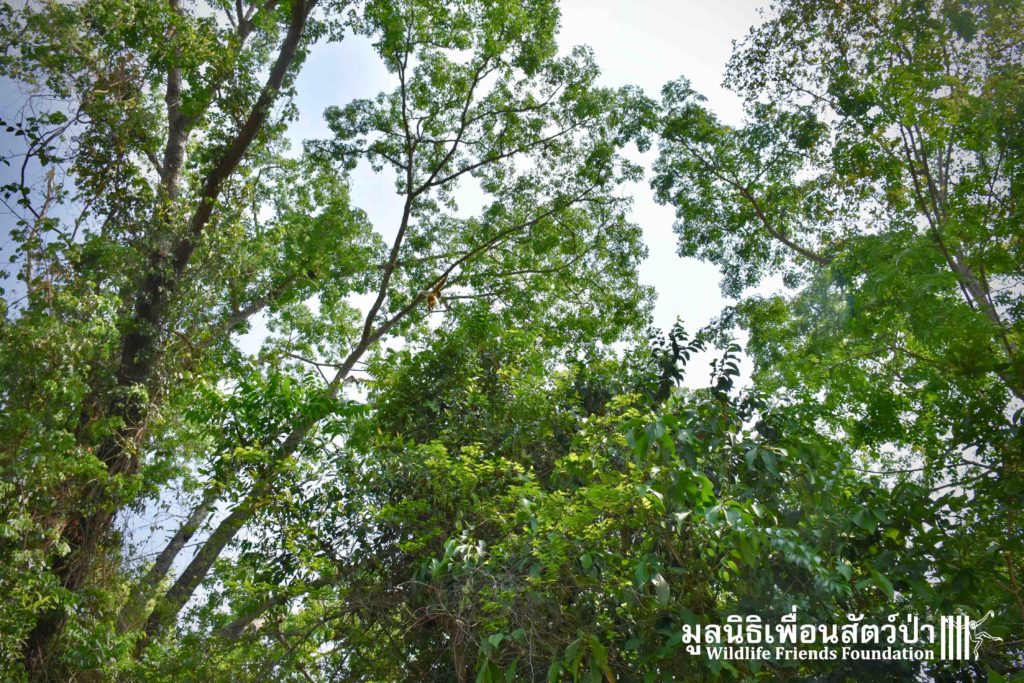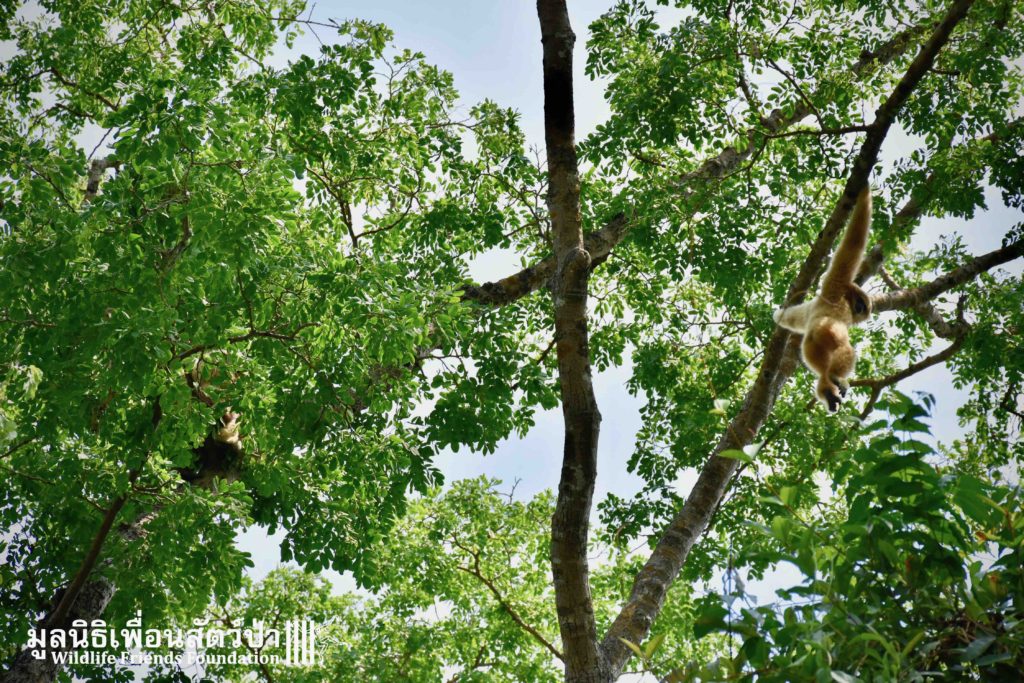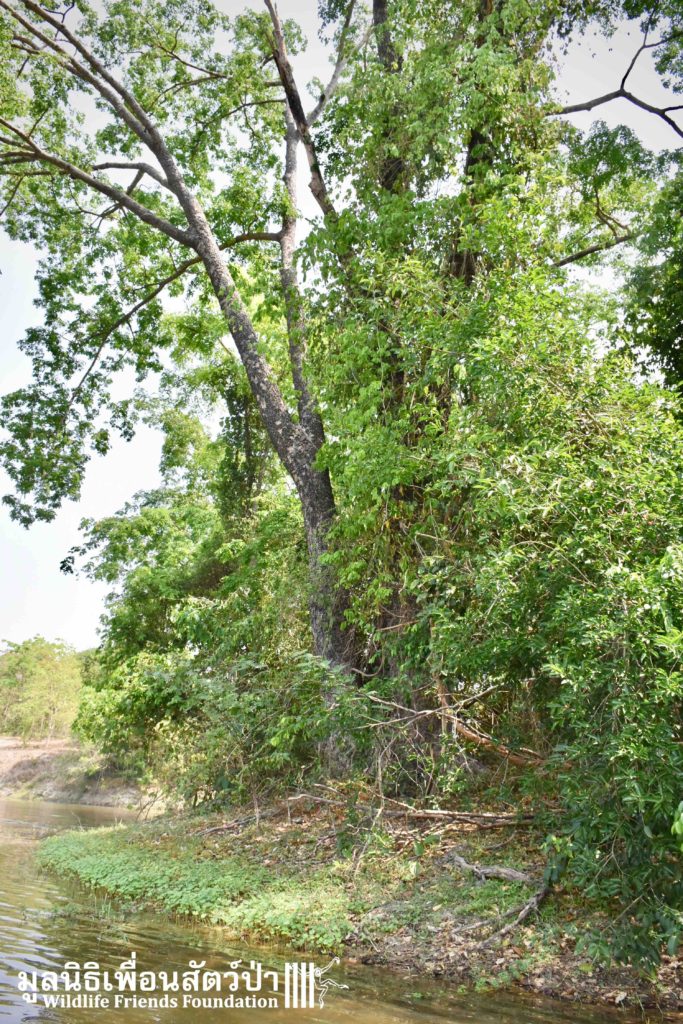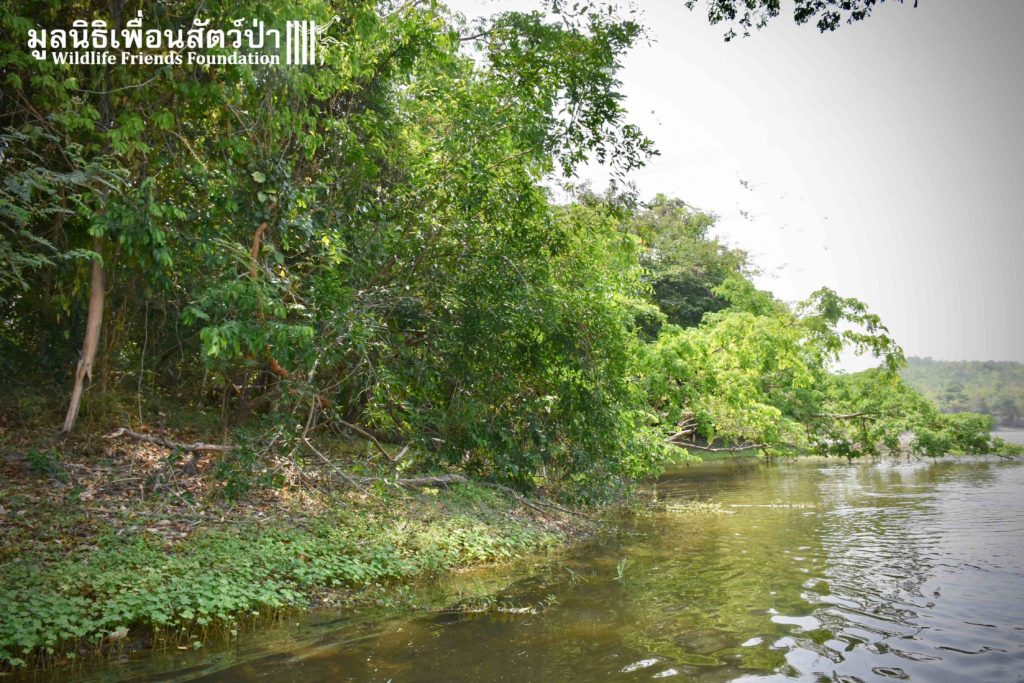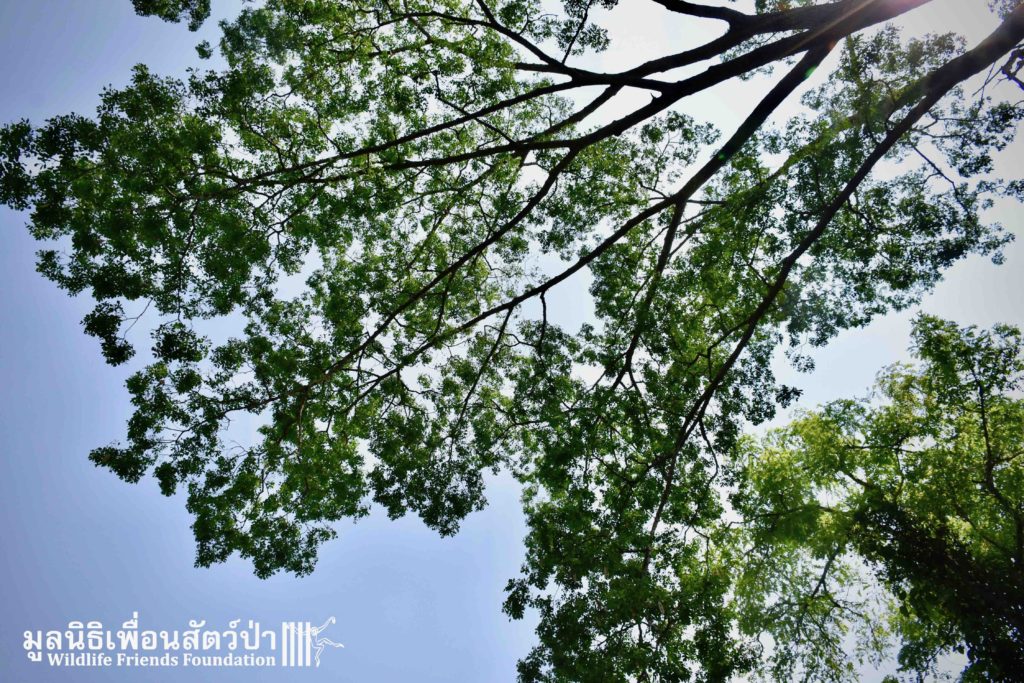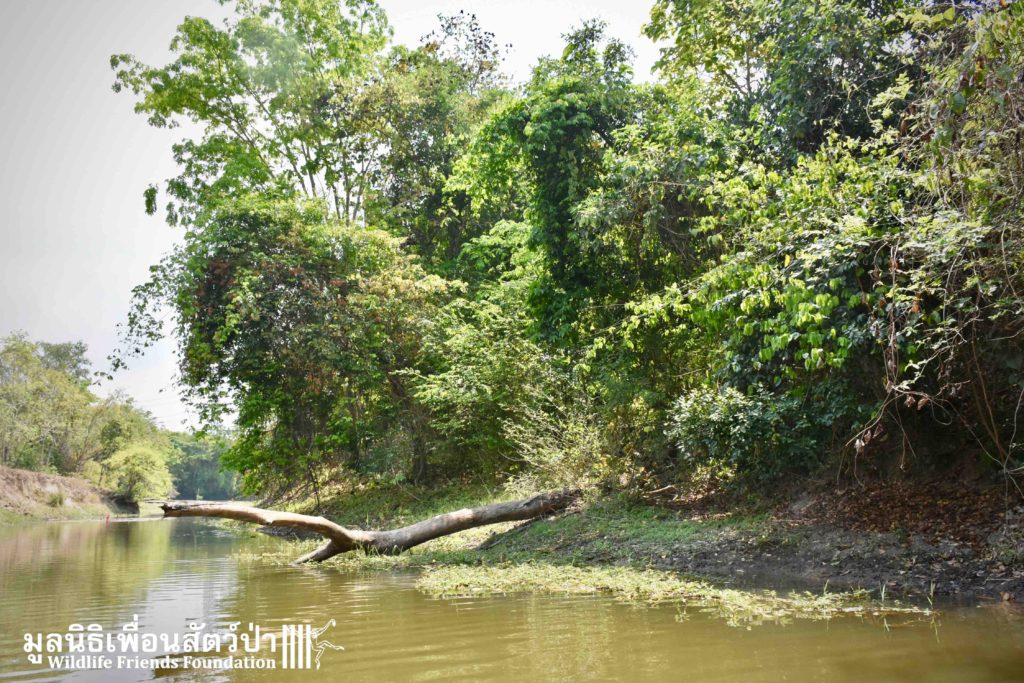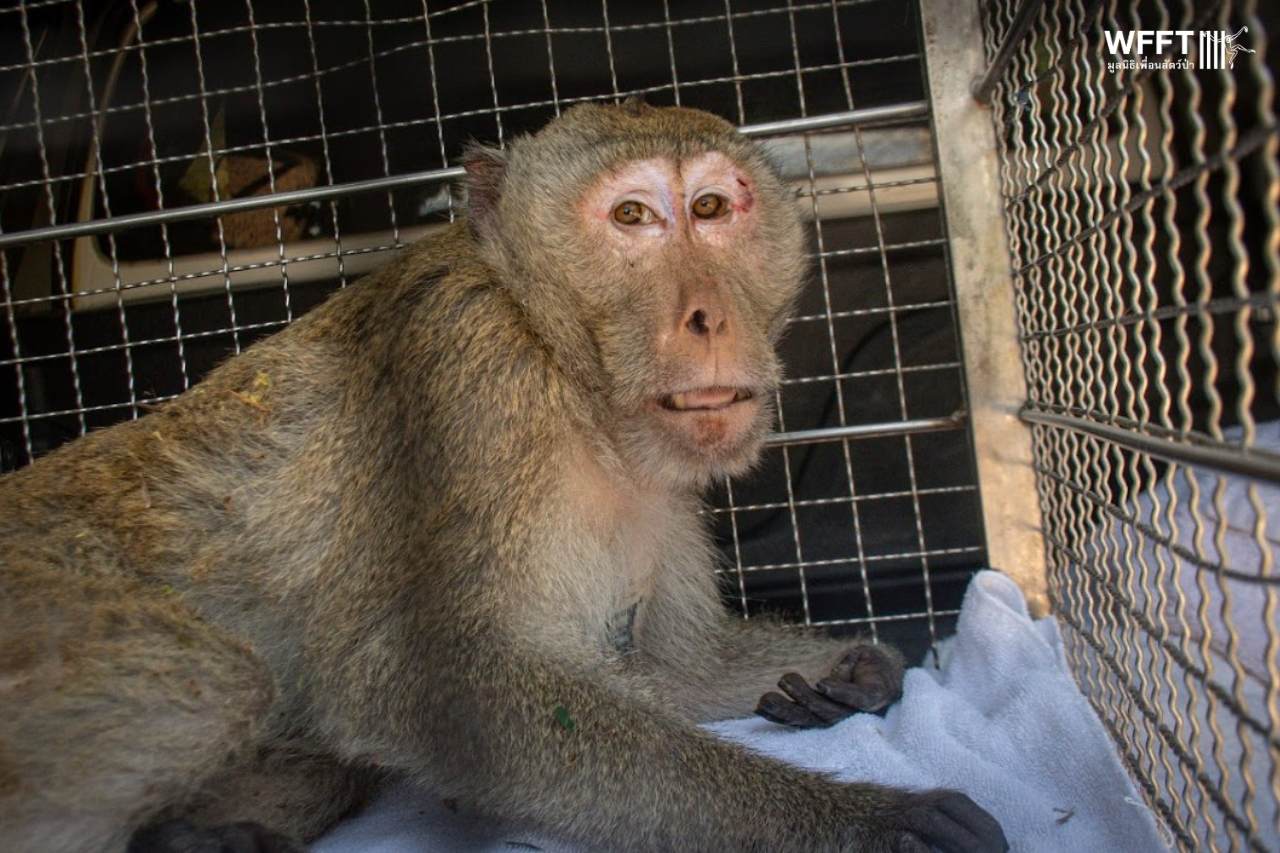It's time to take action—learn how you can help stop this exploitation and protect slow lorises from further harm.
Cosmo’s Family on the Move…
A few days ago white-handed gibbons (Hylobates lar) Cosmo and Bridget, and their 3 offspring, Fino, Picasso and Milano moved to WFFT’s biggest Gibbon Rehabilitation Island ‘Island 8’. Our Gibbon Rehabilitation Islands provide a perfect naturalistic environment for gibbons that we rescue and aim to return back to the wild. At the WFFT Wildlife Rescue Centre we have 10 occupied gibbon rehabilitation islands in the large lake in front of the rescue centre and at WFFT’s Project 4. These islands were created to aid with the rehabilitation of the gibbons rescued by WFFT, far from human interference. Their diet is supplemented daily by the WFFT Wildlife Staff who go out to the islands using a small boat. Thus, gibbons live as free as possible in a captive setting. Each week the WFFT Vet Team goes out to check the health of the gibbons.
The white-handed gibbon is listed as Endangered (EN) on the IUCN Red List of Threatened Species, it is believed to have undergone a rapid population decline of more than 50% in the last three generations (45 years). This is due to rampant forest loss and loss of mature individuals due to hunting. It is sometimes hunted for its meat and the capture of young gibbons for the pet trade is rampant, particularly here in Thailand, the mother is shot so that the infant can be taken. In some parts of Thailand there are several populations where numbers are at least in the thousands, though in northern Thailand they are very rare. The largest population is in Kaeng Krachan National Park, which probably has on the order of 3,000-4,000 individuals. The Western Forest Complex may well have on the order of 10,000 animals, and likely upwards of 1,000 survive in the western part of Khao Yai National Park.

